Top Ten Dogs for Experienced Owners
Our friends at VetStreet recently polled 218 veterinary professionals to find out which dog breeds they thought were best left to more experienced owners. No one is saying that any of these breeds is bad; however, they do have some character traits and physical differences that make them more challenging than some of the other breeds.
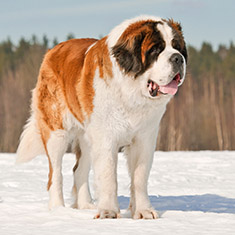
As you know, there is no such thing as a “bad breed”, but all of us can likely agree that some breeds require more socialization and a firmer training hand than others. With the proper training, love, and socialization, any dog of any breed can be a great addition to the family. Newer owners may not be familiar enough with what is required to be able to accomplish the required training and socialization for these more challenging breeds.
Many of the experts’ choices are based on size, which can be an important factor. A large, powerful dog who pulls you around on the leash can create big problems in a hurry. In addition, consideration is given to the reasons for which certain breeds were created, such as guarding and policing. The natural instinct of some of these dogs is to be aggressive, and a firm training hand is needed to keep them under control.
Finally, the vets who participated in the survey gave some weight to the issue of insurance. Depending on where you live, you may have to carry additional homeowner’s insurance if you have a particular breed in your home. Many jurisdictions are starting to recognize temperament and past history as the definitive factors in requiring additional insurance, but many laws are still on the books that are breed-specific.
Interestingly enough, after years of bad press, the Pit Bull did not make the top ten list, or even the top fifteen. The comments VetStreet received on Pit Bulls were a real mixed bag, so when they weighed the positives against the negatives, they could not come to any consensus as to this breed being particularly difficult to raise.
With those disclaimers out of the way, on with the list!
10. St. Bernard: Only one word is needed to describe the major problem with this breed: DROOL! If you’re not prepared to follow behind your dog with a dish towel to wipe his mouth most of the time, you’re not prepared to have a St. Bernard in the house. And no, you can’t just leave the dog outside, unless you happen to live in the Swiss Alps. These dogs come with a very thick coat of fur, leaving them susceptible to heat stroke. Besides, they are companion dogs and do not do well if left alone, away from the family. If you want a St. Bernard, you must consider how you will deal with the shedding, the very large size, and the drool. This is not a breed for the faint of heart!
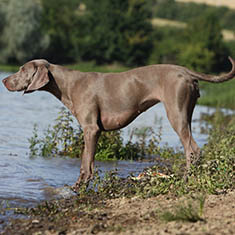
9. German Shepherd Dog: German Shepherds can be great family dogs IF you spend the proper amount of time on training and socialization. These dogs are very protective and naturally aggressive, so you will have trouble if you don’t establish some ground rules right from the start. They are extremely smart, so you always need to stay one step ahead of them. You must keep them occupied mentally as well as physically, which requires some careful planning on your part if you will be away from home. If you slack off on training, you will end up with a dog you cannot trust around your children or neighbors, and you may end up with several lawsuits when the dog follows his or her natural tendencies to protect hearth and home. Aggressive dogs often end up being surrendered to shelters for this very reason, and the shelters have no choice but to put the dog down due to a known history of aggression.
8. Australian Cattle Dog: You may know this dog as a Blue Heeler or an Australian Heeler, but no matter what you call him, this breed is ready for action. They have more energy than they know what to do with, and have never heard of the word fear. Their only speeds are fast and faster. You may have trouble keeping up on walks, or should I say runs, and they are prone to injury because they never back down from any challenge. A firm training hand can keep this dog in line, but new owners may have trouble establishing that total obedience is required.
7. Dalmatian: Yes, they’re cute in the movies, but they’re also a handful, even when you don’t have 101 of them. Dalmatians were bred to work: they originally kept the streets clear for carriages and horse-drawn fire trucks. If no work is provided on a regular basis, they become destructive. You must plan for your time away from home so that you provide mental and physical stimulation for the Dalmatian while you are at work or out running errands. Dalmatians were seriously overbred soon after the original Disney movie came out, resulting in major instability in the gene pool. Responsible breeders have worked hard in the years since then to weed out many genetic problems such as deafness, and care must be exercised in finding a breeder who knows what they are doing.
6. Weimaraner: Although beautiful, these dogs are a handful. They have very high energy and are not happy without something to do ALL the time. Separation anxiety can be a big problem with Weims, and although smart, they are hard to potty train. If you have cats or other small pets, the Weimaraner will almost certainly see them as prey. If you’re not the most active of people, you will not be able to keep a Weimaraner happy and healthy as your companion.
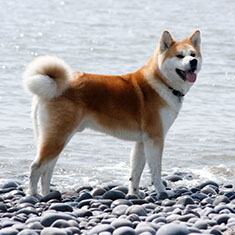
5. Rottweiler: One of the most powerful of breeds, Rotts are over 100 pounds of solid muscle. They are extremely powerful, and this, coupled with their strong protective instincts, can make them a true danger if not properly trained and socialized. A Rottweiler requires a trainer with a very strong hand and a dominant character. Training must begin at a young age while the dog is small enough for you to easily control, and the job never ends. Constant discipline in regards to training is the only way to safely keep one of these beautiful dogs.
4. Alaskan Malamute: If you live in Alaska and travel by sled, this is the perfect dog for you. Otherwise, you may have a hard time dealing with the dog’s boundless energy and the resulting exercise requirements. This breed is internally equipped to travel miles and miles while pulling a heavy sled; taking a sedate walk through the park is not going to do it for this dog. The Malamute is a heavy shedder, particularly in the spring and fall, making it tough to keep up with grooming and housekeeping. And if you live in a warmer climate, you need to watch out for heat illnesses.
3. Chinese Shar-Pei: The Shar-Pei is challenging on two levels. First, these dogs are extremely territorial. Although they will be YOUR best friend, they may not much care for your friends or family members. Secondly, all of those wrinkles must be kept clean and dry to prevent skin problems. If you’re not an experienced dog person, you might not be able to keep up with both issues. Constant socialization is required to keep the dog open to meeting new people, and constant vigilance is required to keep the areas between the wrinkles from getting infected or irritated.
2. Chow Chow: These giant puff-balls aren’t as huggable as they appear to be. They are not especially fond of cuddling because of their independent nature. Chow Chows have been known to be aggressive toward other dogs, and are stubborn when it comes to training. They’re certainly smart enough to train well, but they have their own ideas about whether or not it’s worth their time. They are also heavy shedders.
1. Akita: The Akita was originally bred to hunt large game, and they are still formidable opponents to anyone trying to invade their territory. They can weigh well over 100 pounds, making it vital that they be trained while they are young and small. However, they are not easily trained by novices due to their strongly independent nature. They have an exceedingly strong prey drive, making them a danger to other animals. Like many of the dogs on this list, the Akita sheds A LOT. Daily grooming is recommended most of the time, and absolutely required seasonally for about two weeks.
If you are a novice dog owner, and we’ve scared you off, be sure to check out our article Top Ten Dogs for Novice Owners.
Doggies Den: Latest Articles
 Homemade Thanksgiving Treats for Your Dog
Homemade Thanksgiving Treats for Your Dog
NUTRITION We all want to include our dogs in our holiday celebrations, but hopefully, you're aware that sharing table scraps with your dog isn't always the best idea.
 Keeping Your Dog Safe during the Summer Months
Keeping Your Dog Safe during the Summer Months
HEALTH Summer is coming on fast, so it’s time to plan how you will keep your dog safe and healthy through the lazy, carefree, warm days.
 Vaccination Time Again-Keeping Your Puppy Healthy
Vaccination Time Again-Keeping Your Puppy Healthy
DOG HEALTH So you have your new puppy picked out. There are quite a few shots, treatments and examinations that will keep the newest member of your family healthy.
 Canine Thanksgiving Feast
Canine Thanksgiving Feast
NUTRITION With the wide variety of food at Thanksgiving dinner, chances are you'll want to give your dog something special, too. If you're contemplating what to feed your dog for the holiday, here is a guide to a great Canine Thanksgiving Feast.
 Dog Walking Tips Every Owner Should Know
Dog Walking Tips Every Owner Should Know
DOG FUN Walking your dog is not only crucial to keeping him healthy and happy, it strengthens the bond between your canine friend and his caregiver. There are a lot of obstacles out there. Don’t forget these simple tips to keep your walk fun and safe in the outside world.
 The Benefits of Physiotherapy for your Dog
The Benefits of Physiotherapy for your Dog
HEALTH The same techniques that physiotherapists use to treat a variety of injuries and conditions in humans have been adapted to suit animals with great success. Family pets, show dogs, and working dogs can all benefit greatly from physiotherapy. Dogs whose activities involve a lot of agility are especially susceptible to the types of problems that physiotherapy can address.
 The Decision- Adding a Dog to Your Family
The Decision- Adding a Dog to Your Family
FIRST TIME OWNERSBringing a dog into your family is a decision where many people don’t realize it’s magnitude until after they have the dog. There are a number of things that you need to research before you decide to purchase a dog, and it starts right in your own home.
 Bringing Your Dog Into Your New Baby's Life
Bringing Your Dog Into Your New Baby's Life
HEALTH Many believe that a dog and a new baby cannot happily coexist, so therefore the dog has to go. This is not necessarily the case.  A new baby does not mean you have to abandon your dog.

Doggies Den:
Most Popular Articles

Dog Pregnancy Symptoms
HEALTHIf you suspect your dog might be pregnant, check out part one in this series on pregnant dogs, where we cover pregnant dog symptoms.
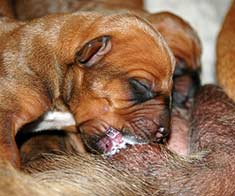
Dog Birth
HEALTHIn the third article of our dog pregnancy series, we look at the wonderful, but messy, process of bringing newborn puppies into the world.

Indoor Dog Potties
DOG PRODUCTSIt's been a long day at work. You were so busy, you didn't even take time to eat a sandwich, let alone run home to let your dog out. You're on your way home, knowing the poor dog is crossing his or her legs by now, when your car breaks down, delaying you even further. Can't somebody make this easier?
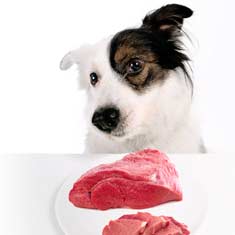
Your Dog’s Digestive System
PHYSIOLOGYEver wonder why your dog eats so fast? Or why he eats gross things? Or why he gets sick to his stomach? Or why his waste stinks so bad? Some of these things are normal, some are not.

Canine Respiratory System
BREATHINGThe basic function of your dog's respiratory system is to bring oxygen in to and remove carbon dioxide from the body. Knowing the symptoms of respiratory diseases can help you help your stay healthy.
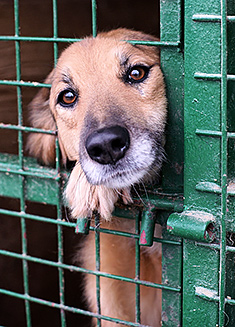
Shelter Dog Adoption Tips for Success
ADOPTION Are you intimidated by the prospect of "rescuing" a dog from a shelter? One reason that you may be wary of adopting a dog from a shelter is not knowing how to choose. Adopting a dog from a shelter can be a rewarding process, if you're prepared to do a reasonable amount of research.

Canine Urinary Tract Infections
SYMPTOMS AND TREATMENTDoes your dog seem to be having trouble relieving his or her bladder? Learn how to recognize the signs of urinary tract infections and how to treat them before they spread.

What to do for Dog Diarrhea
SYMPTOMS AND REMEDIESIf you have dogs in your house for any length of time, you have likely experienced at least one bout of dog diarrhea. Beyond the pain in the tuckus involved in cleaning up the mess, you should know what causes diarrhea, and when it's important to see the vet.
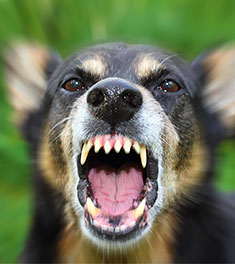
What to do for a Dog Bite
DOG BEHAVIOR Getting bitten by a dog can be scary, and you may be tempted to run around in circles for a while, trying to figure out what to do. Here's our guide to help you manage the situation.

Top Ten Tips for Living with a Senior Dog
DOG HEALTH Bringing home a new puppy is so exciting, but it doesn’t take all that long for your exuberant puppy to grow into a senior dog who may have special needs. Here are the doggies.com top ten tips for taking care of your companion who has been with you through so much.
